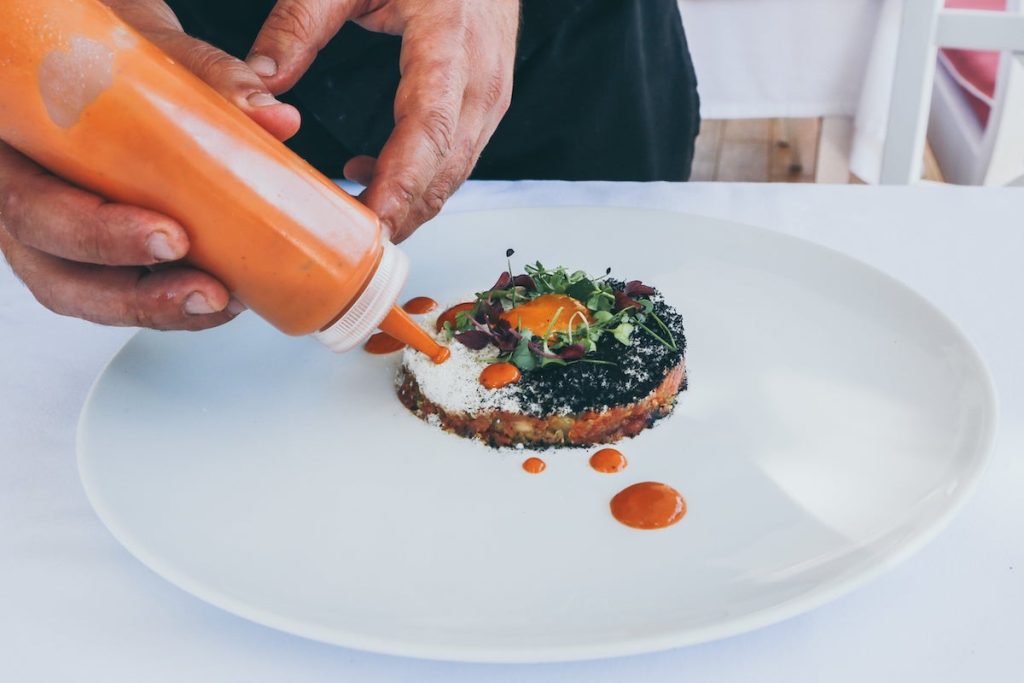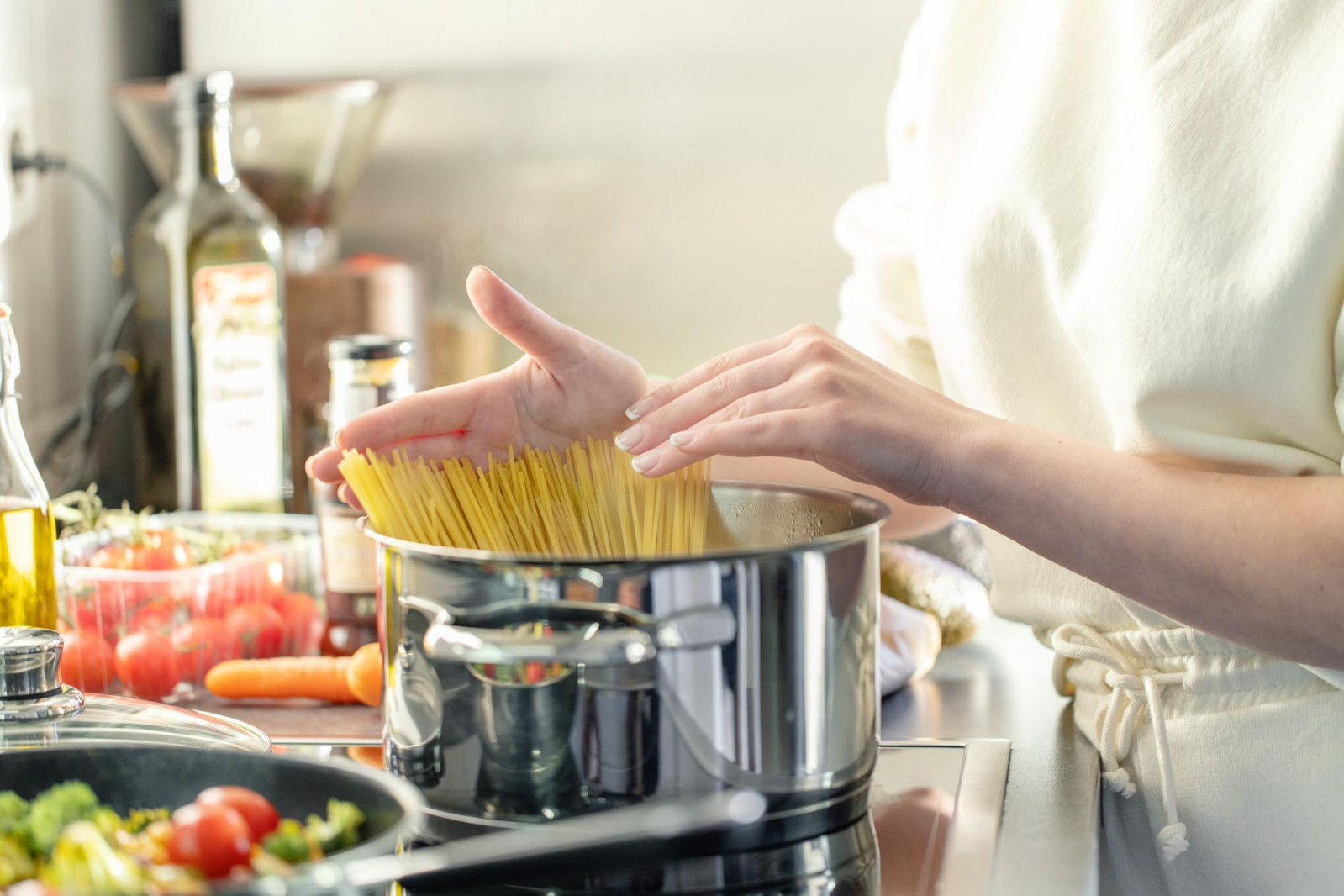The Art of Presentation: Transforming Home-Cooked Dishes into Stunning Visual Experiences

Introduction to the Art of Presentation
Every home cook knows that a delicious dish deserves more than just a good taste. The art of presentation elevates the dining experience, transforming simple meals into stunning visual feasts. It is not just about how food tastes, but how it looks on the plate that captivates and delights diners. Food presentation has been a key component in gourmet restaurants, but it can also be easily adapted for the home kitchen.
Incorporating creativity into meal presentation opens up new avenues for enjoyment, making each meal a special occasion. Here are some quick tips to keep in mind:
- Color Variety: Use vibrant vegetables and garnishes to enhance the visual appeal. For example, a dish of roasted carrots and vibrant purple beets can bring an eye-catching array of colors to the table. Complementing these vegetables with a sprinkle of fresh herbs, like cilantro or parsley, further enriches the presentation.
- Plating Techniques: Explore different styles, such as stacking, fanning, or using the “sauce smear” technique. Stacking layers of ingredients, like a towering burger or a layered parfait, can create height and intrigue, whereas fanning slices of fruit or meats on the plate can add an artistic flair.
- Thoughtful Serveware: Choose dishes and utensils that complement the food’s colors and textures. A bright white plate can make colorful salads pop, while rustic wooden boards can enhance the charm of a charcuterie spread. Choosing the right utensils, like a delicate fork for a fine dessert, can also add to the overall aesthetic.
- Texture Play: Mix various textures to create contrast, such as crispy toppings on creamy bases. Incorporate crunchy toasted nuts on top of a smooth avocado spread, or pair silky mashed potatoes with crisp fried onions for a delightful juxtaposition. This not only makes the dish visually appealing but also creates variety in each bite.
Beautiful presentation goes beyond aesthetics; it has significant psychological effects on diners. An artfully arranged plate can:
- Increase appetite and anticipation. Studies suggest that when food is presented beautifully, diners are more likely to perceive the taste as superior and feel more excited about the meal.
- Encourage mindfulness and appreciation of the meal. Taking the time to appreciate the arrangement draws diners into the moment, promoting a deeper connection with the food.
- Transform sharing meals into a more memorable experience. An elegantly plated dish can spark conversation and admiration among guests, enhancing the sense of togetherness.
By mastering the art of presentation, home cooks can impress family and friends while unlocking the power of visual storytelling. Each dish becomes a canvas to express creativity and passion. It’s time to step up your game and learn how to make every plate not only a treat for the palate but also a captivating visual delight. Don’t hesitate to explore your local culinary hotspots for inspiration or even delve into online platforms like Instagram or Pinterest, where countless food artists share their impressive creations.
DISCOVER MORE: Click here to dive into the world of nature photography

Discovering the Elements of Visual Presentation
Understanding and mastering the key elements of visual presentation can be a game changer for any home cook looking to enhance their culinary creations. The concept of food presentation is not merely an aesthetic endeavor; it is an essential part of the overall dining experience. From the colors and textures to the arrangement of food on the plate, every decision contributes to a memorable meal. Below are essential elements to consider when presenting your home-cooked dishes:
- Texture and Contrast: The interplay of various textures is crucial in food presentation. Incorporating different textures can create a sensory journey that engages not only the eyes but also the palate. For example, pairing a soft, creamy risotto topped with crisp vegetables can generate an inviting contrast. Similarly, incorporating crunchy toppings on smooth dips adds an appealing element that invites guests to dig in.
- Garnishes and Accents: Simple yet effective, garnishes can elevate a dish from ordinary to extraordinary. A sprig of fresh basil or a twist of lemon peel introduces freshness and heightens visual interest. However, it’s important to keep the garnishes relevant to the dish at hand; consider topping a hearty beef stew with a dollop of crème fraîche and a sprinkle of chives for both flavor and flair.
- Negative Space: One of the secrets to beautiful plating is the use of negative space — the empty areas on the plate that frame the food. This technique allows the dish to ‘breathe’ and prevents overcrowding. A strategically placed small portion of food against an empty plate can be striking, as it draws attention to the artistry involved in the dish’s creation.
- Layering and Stacking: Adding height through layering can give your presentations an impressive lift. Instead of a flat arrangement of ingredients, consider stacking items like grilled vegetables, fish, or even desserts. For instance, a layered trifle or a well-stacked burger can add excitement and showcase the variety of components in your dish.
Furthermore, the importance of lighting and presentation tools cannot be overstated. Natural light is ideal for showcasing vibrant colors, so try to serve dishes near windows or under soft lighting. Additionally, investing in a few quality plating tools — like squeeze bottles for sauces or precision tweezers for delicate garnishes — can significantly elevate your plating game.
Research indicates that diners are more likely to enjoy and appreciate a meal that is beautifully presented. According to a study published in the Journal of Sensory Studies, visually appealing dishes not only enhance the dining experience but also influence taste perception. When food looks good, we are more likely to perceive its flavors as more intense and satisfying. Thus, investing time and effort into presentation is more than just an artistic endeavor; it enhances the overall enjoyment of the meal.
In the world of culinary creativity, understanding how to present food well can be a fulfilling way to express one’s passion. As you refine the art of presentation, you’ll discover that impressive plating techniques and thoughtful details transform your dining experiences into delightful visual escapades that can be shared and celebrated with family and friends.
| Presentation Technique | Advantages |
|---|---|
| Plating Styles | Enhances visual appeal of dishes. |
| Color Contrasts | Makes meals more inviting and vibrant. |
| Garnishing | Adds texture and flavor dimensions. |
| Layering | Creates depth and interest in presentations. |
| Serving Tools | Provides sophistication and functionality. |
Incorporating these refined presentation techniques can dramatically transform your home-cooked dishes into stunning visuals. For instance, mastering various plating styles not only enhances the visual appeal but also tells a story about the dish. By creatively arranging your food, your culinary creations become a feast for both the eyes and the palate.Exploring the use of color contrasts in plating can further elevate the vibrancy and attractiveness of your meals, ensuring they catch the eye and stimulate cravings. Garnishing with fresh herbs or edible flowers adds texture and flavor, tantalizing the senses and making each dish a unique experience. Layering ingredients strategically not only provides depth but engages the viewer’s curiosity.Additionally, utilizing elegant serving tools can enhance the overall dining experience, marrying sophistication with practical use. Such elevated presentation can transform even the simplest of home-cooked meals into extraordinary visual experiences. The artistry of food presentation can serve as an invitation for guests to savor your culinary talent.
DIVE DEEPER: Click here to discover the therapeutic power of music</p
Techniques for Elevating Your Plating Game
Once you grasp the fundamental elements of visual presentation, the next step is to explore practical techniques that can elevate your plating game and transform your home-cooked dishes. Utilizing these innovative methods will ensure your meals not only taste delightful but also create a stunning visual feast that captivates your guests. Here are some effective techniques to consider:
- Color Play: Color adds vibrancy and energy to a dish. Utilize the natural colors of the ingredients to create a balanced palette. For example, a bright orange carrot purée can be paired with green asparagus and purple radishes to form a striking contrast. Furthermore, consider using colorful serving ware that complements or contrasts with the dish. A white plate offers a blank canvas that allows the food to shine, while darker plates can provide an elegant backdrop.
- Symmetry and Asymmetry: The arrangement of food on a plate can dramatically alter its perception. While symmetrical arrangements often evoke a sense of order and refinement, asymmetrical presentations can evoke creativity and lots of charm. For instance, a minimalist approach with a neatly stacked pile of sushi coupled with artisanal sauces can create an elevated dining experience. Playfulness in your arrangement can provoke curiosity and intrigue, leading diners to engage more deeply with the meal.
- Serving Size and Portions: Paying attention to portion size can impact visual appeal significantly. Small, well-proportioned servings can often appear more sophisticated than large, heaping servings. Consider using smaller plates to give the illusion of generous servings while maintaining a refined appearance. Additionally, the trend of deconstructed dishes allows components to be plated separately yet artfully arranged, creating an engaging meal where diners can interact with their food.
- Themed Presentation: Incorporate a theme into your dish presentation to add a narrative element. For instance, while serving a Mediterranean-inspired meal, consider using terra cotta bowls, and rustic wooden boards to enhance the experience. Creating a cohesive theme will allow guests to feel more immersed in the culinary journey you are presenting, making it more memorable.
Props and Props: When presenting, consider using edible props to enhance the storytelling aspect of the dish. For instance, serving a soup in a hollowed-out bread bowl can add an element of surprise and creativity. Likewise, incorporating natural elements like herbs or vegetables as part of the presentation can create a more authentic connection to the ingredients used.
It is also essential to evaluate the overall experience from a diner’s perspective. Think about how the dish will be approached: Is there enough space for silverware? Are flavors balanced on the palate? Incorporating these considerations into your design can provide clarity for the diner and further enhance the allure of the dish.
Incorporating techniques that pay homage to artistic principles can be genuinely transformative for anyone passionate about cooking. Bending established norms or adhering to traditional presentation practices while experimenting with new ideas will nurture creativity. As you explore the art of presentation, you’ll engage your guests’ senses, making each meal a cherished and memorable occasion.
DIVE DEEPER: Click here to discover the art of landscape photography
Conclusion: Embracing the Art of Culinary Presentation
In the culinary world, the importance of visual appeal cannot be overstated. The art of presentation plays a pivotal role in transforming home-cooked dishes into stunning visual experiences that not only delight the palate but also engage the eyes and emotions. By skillfully employing techniques such as color play, symmetry and asymmetry, and thoughtful themed presentations, you have the power to elevate everyday meals into extraordinary experiences.
Beyond mere aesthetics, effective presentation connects guests to the story of your meal, encouraging them to appreciate the flavors and artistry involved. As you experiment with different plating methods, remember that creativity and technique are intertwined—allowing your personality to shine through each dish. The journey of mastering presentation is an ongoing evolution, filled with opportunities to explore new styles and flavors.
As you embrace the art of presentation, consider not just your dishes but the entire dining experience you curate—from the choice of table settings to the ambiance in your dining space. Ultimately, what makes a meal memorable is not only how it tastes but also how it looks and feels. So, equip yourself with these techniques, unleash your creativity, and transform your cooking into an enchanting visual narrative that will impress your family and friends. With every plate you serve, you are not just nourishing; you are creating an unforgettable journey through the art of culinary presentation.


